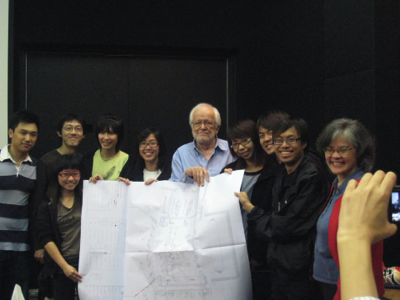
A Chinese Journey
Monday, May 11, 2009
From April 15th to May 10th, Molly and I embarked on a Chinese Journey. I’d frequently visited Hong Kong in the 1970‘s as consultant to the Hong Kong Arts Center, and it was wonderful to see this very special complex by architect Tao Ho thriving in its thirtieth year. My last visit to China (Beijing, Guilin and Canton) was in 1985, when I’d lectured for the Ministry of Culture on theatre design. It’s only a cliche to remark on the phenomenal changes that have happened in this enormous country.
First to Hong Kong, where I did twenty hours of masterclasses on stage lighting and theatre design with lighting students at the Hong Kong Academy of the Performing Arts—a delightful and talented group. By happy coincidence two colleagues, Dawn Chiang and Rob Halliday, were also working at the Academy and we enjoyed a joint session together. A public presentation “Light on Theatre” was part of a busy ten days.

Then to Beijing. Apart from the obligatory Great Wall and Forbidden City, we toured the new and stunning National Center for the Performing Arts, and were honored to dine with Sha Xiaolan, the brilliant lighting designer of the opening and closing of the Beijing 2008 Olympics.
But then holiday: Xi’an, with terra-cotta warriors, Lijiang, a truly magical ancient city in Yunnan province and lastly the very Tibetan town of Zhongdian, now called Shangri-La. We saw so many wonders of nature, of traditional architecture, of performance, and met so many wonderful people.
China has a living culture that stretches back continuously over four thousand years. Despite overwhelming change, that tradition still seems present in people’s lives. Since my first visits to Hong Kong in 1972, I’ve been fascinated by the potential impact that traditional Chinese theatre architecture might have on new theatre buildings in China. The West has striven for fifty years to break out of the 19th century proscenium toward more flexible, yet intimate performance spaces.
